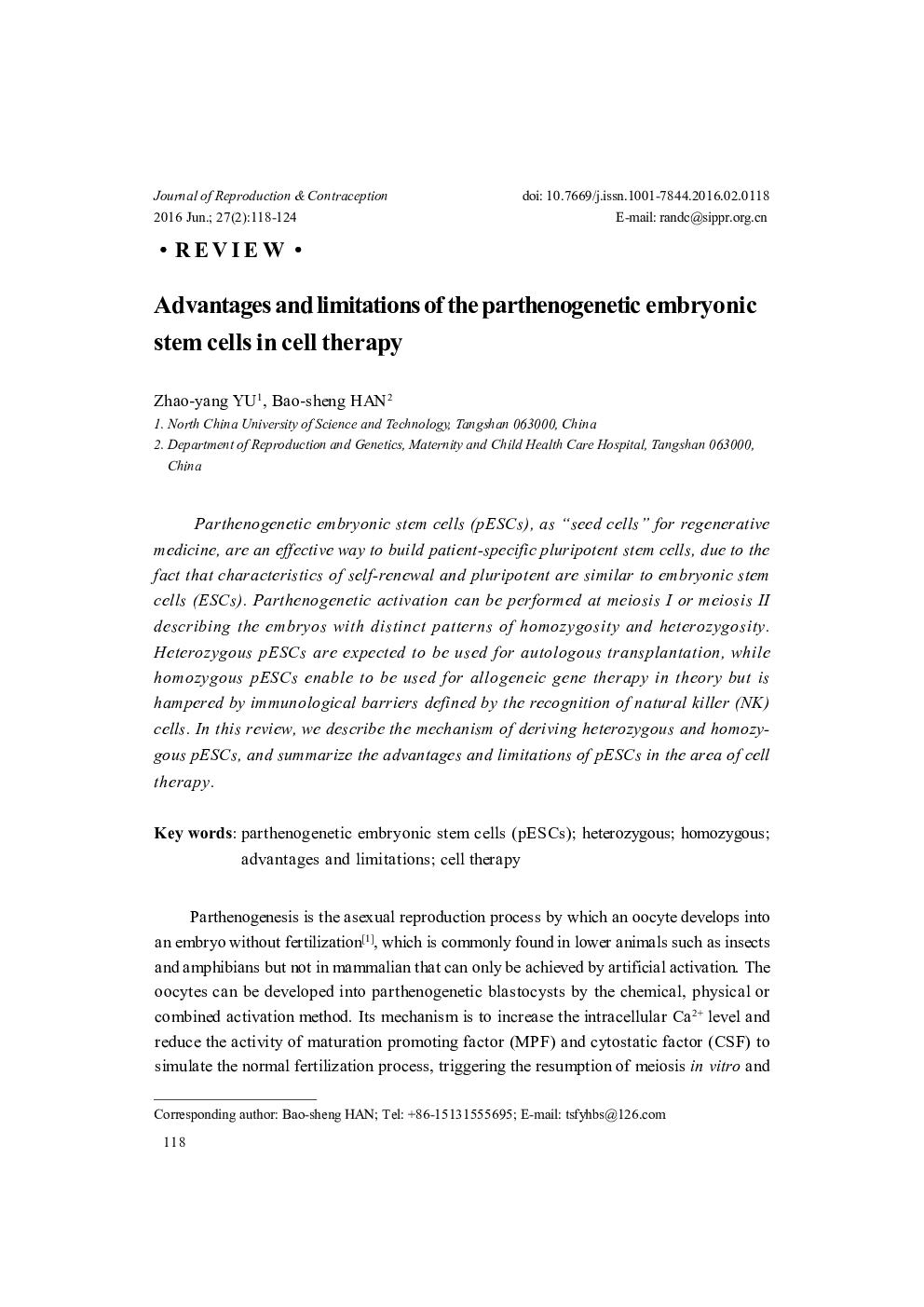| Article ID | Journal | Published Year | Pages | File Type |
|---|---|---|---|---|
| 3963857 | Journal of Reproduction and Contraception | 2016 | 7 Pages |
Parthenogenetic embryonic stem cells (pESCs), as “seed cells” for regenerative medicine, are an effective way to build patient-specific pluripotent stem cells, due to the fact that characteristics of self-renewal and pluripotent are similar to embryonic stem cells (ESCs). Parthenogenetic activation can be performed at meiosis I or meiosis II describing the embryos with distinct patterns of homozygosity and heterozygosity. Heterozygous pESCs are expected to be used for autologous transplantation, while homozygous pESCs enable to be used for allogeneic gene therapy in theory but is hampered by immunological barriers defined by the recognition of natural killer (NK) cells. In this review, we describe the mechanism of deriving heterozygous and homozygous pESCs, and summarize the advantages and limitations of pESCs in the area of cell therapy.
